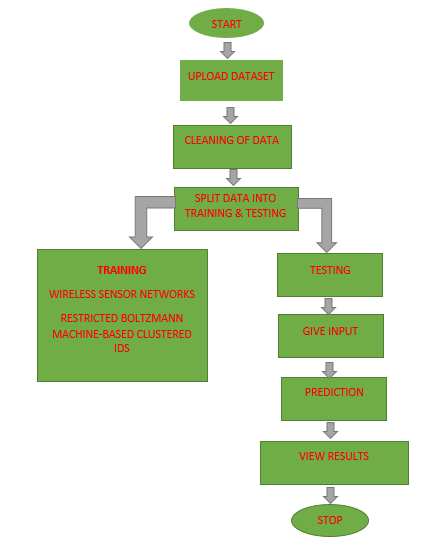On the Feasibility of Deep Learning in Sensor Network Intrusion Detection
Objective
Our goal is to predict the solution for wireless sensor network by using intrusion detection system (IDS) is a solution to this problem. It analyzes the network by collecting sufficient amount of data and detects abnormal behavior of sensor node(s). IDS based security mechanisms proposed for other network paradigms such as ad hoc networks, cannot directly be used in WSNs.
Abstract
In this project, we present a comprehensive analysis of the use of machine and deep learning solutions for IDS systems in Wireless Sensor Networks (WSNs). To accomplish this, we introduce Restricted Boltzmann Machine-based Clustered IDS (RBC-IDS), a potential deep learning-based IDS methodology for monitoring critical infrastructures by WSNs.
We study the performance of RBC-IDS, and compare it to the previously proposed adaptive machine learning-based IDS: The Adaptively Supervised and Clustered Hybrid IDS (ASCH-IDS). Numerical results show that RBC-IDS and ASCH-IDS achieve the same detection and accuracy rates, though the detection time of RBCIDS is approximately twice that of ASCH-IDS.
Keywords: Wireless Sensor Network, Cyber Security, Restricted Boltzmann Machine, Deep Learning, Machine Learning, Intrusion Detection.
NOTE: Without the concern of our team, please don't submit to the college. This Abstract varies based on student requirements.
Block Diagram

Specifications
HARDWARE SPECIFICATIONS:
- Processor: I3/Intel
- Processor RAM: 4GB (min)
- Hard Disk: 128 GB
- Key Board: Standard Windows Keyboard
- Mouse: Two or Three Button Mouse
- Monitor: Any
SOFTWARE SPECIFICATIONS:
- Operating System: Windows 7+
- Server-side Script: Python 3.6+
- IDE: PyCharm
- Libraries Used: Pandas, Numpy, sklearn, Flask, TensorFlow, OS.
Learning Outcomes
- Scope of Real Time Application Scenarios.
- What is a search engine and how browser can work.
- What type of technology version?
- Use of wireless sensor network.
- Need of PyCharm-IDE to develop a web application.
- How to implement segmentation.
- Where this application can be used.
- What are the diseases attacked by the fruits.
- Features of machine learning.
- Working Procedure.
- Testing Techniques.
- How to run and deploy the applications?
- Introduction to basic technologies.
- How project works.
- Input and Output modules.
- How test the project based on user inputs and observe the output?
- Project Development Skills:
- Problem analyzing skills.
- Problem solving skills.
- Creativity and imaginary skills.
- Programming skills.
- Deployment.
- Testing skills.
- Debugging skills.
- Project presentation skills.
- Thesis writing skills.





 Paper Publishing
Paper Publishing
